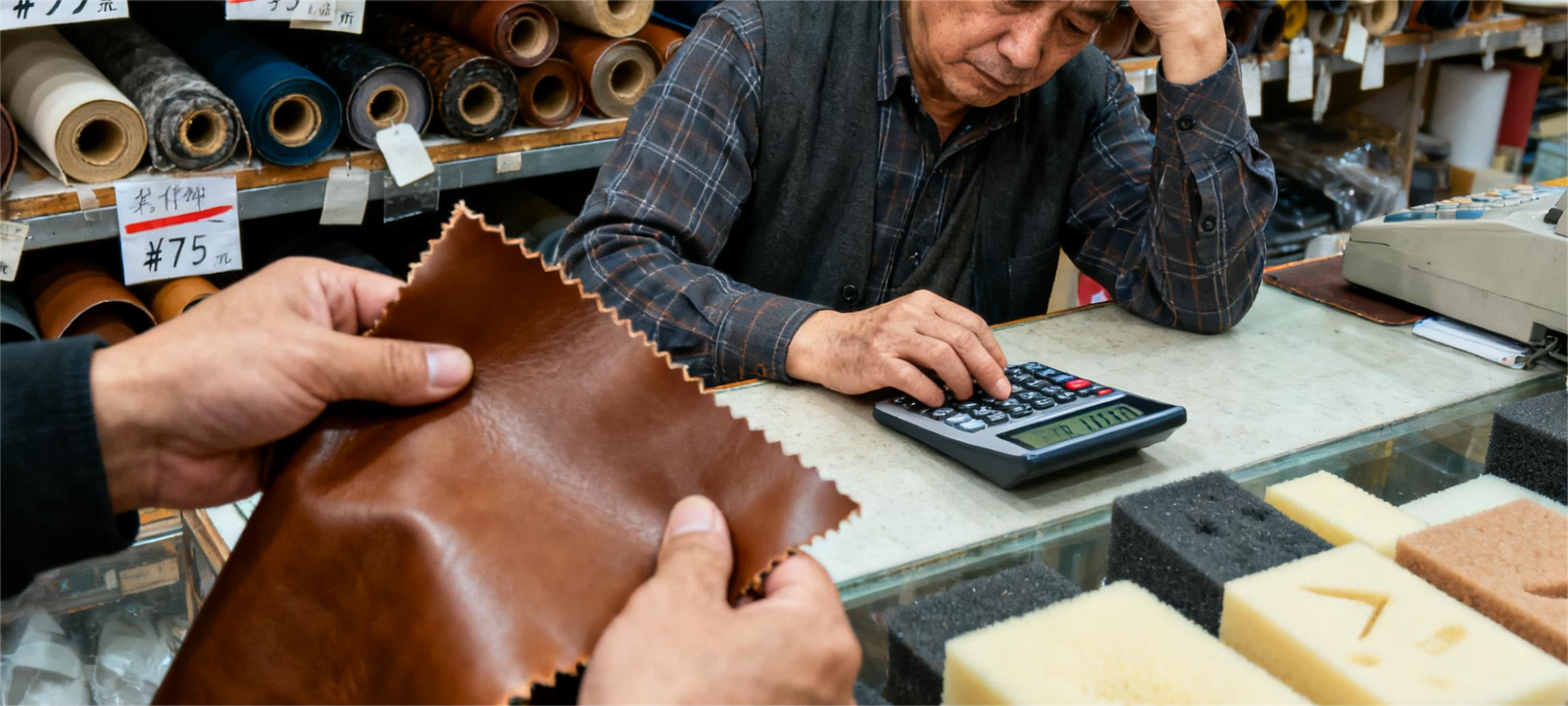The Future of Shoe Exports: Key Markets to Watch?
Is your shoe business looking for new growth opportunities abroad? The global shoe export market is always changing. Knowing the key markets is crucial for success.
The future of shoe exports is shaped by evolving trade agreements, a growing demand for sustainable footwear, and shifting labor costs. Exporters must monitor these factors to identify new markets and maintain competitiveness. I have been in shoe manufacturing for over two decades. I have seen many changes in where shoes are made and where they are sold. The global market is always moving. It is important to keep an eye on these trends. This helps us plan for the future. We must know the best places to sell our shoes. We must also understand the challenges.
I have been in shoe manufacturing for over two decades. I have seen many changes in where shoes are made and where they are sold. The global market is always moving. It is important to keep an eye on these trends. This helps us plan for the future. We must know the best places to sell our shoes. We must also understand the challenges.
How are trade agreements shaping the shoe export market? Do you understand how trade rules affect your shoe business? Trade agreements are very important. They can open or close doors for shoe exports. Trade agreements are fundamentally reshaping the shoe export market by altering tariffs, quotas, and customs procedures. These agreements can make exports cheaper or more expensive, directly influencing where manufacturers choose to produce and where they sell their products. In my experience, dealing with international trade, tariffs, and quotas can be a real headache. But they are also key to market access. Free trade agreements can be a huge blessing. They can make our shoes more competitive in new markets. I have seen how a new agreement can suddenly make a market very attractive.
Here's how trade agreements impact the industry:
- Tariff Reductions or Eliminations: This is the most direct impact. When tariffs are lowered or removed, the cost of importing shoes into a country decreases. This makes our shoes more affordable and competitive for consumers in that market. This helps us sell more. For example, if we export to a country with a 10% tariff, and that tariff is removed, our shoes instantly become 10% cheaper for the buyer, or we can increase our profit margin.
- Quotas and Market Access: Some agreements set quotas, limiting how many shoes can be imported. Conversely, new agreements can remove existing quotas, opening up markets that were previously restricted. This allows for greater volume of sales. I have seen how a tight quota can make it impossible to grow in a certain market.
- Rules of Origin: These rules determine where a product originates. This is important for qualifying for preferential treatment under trade agreements. For example, a shoe might need to be "made in Vietnam" to get duty-free access to the EU. This pushes manufacturers to set up production in specific countries. It affects our supply chain decisions.
- Streamlined Customs Procedures: Many trade agreements aim to simplify and speed up customs processes. This reduces bureaucratic hurdles and delays at borders. This means shoes can reach consumers faster. It also lowers logistical costs. Time is money in exports. This is a very welcome change.
- Impact on Sourcing and Manufacturing Locations: Manufacturers often shift their production to countries that have favorable trade agreements with major consumer markets. For example, if Mexico has a good trade deal with the US, some companies might produce more shoes in Mexico to avoid tariffs when exporting to the US. This affects where new factories are built.
These agreements are not just legal documents. They are powerful tools that shape global trade flows. They guide our strategic decisions about production and market entry.
What opportunities exist for exporters in sustainable footwear?
Is your company ready to meet the growing demand for eco-friendly shoes? The market for sustainable footwear is booming. This creates great opportunities for exporters.
Significant opportunities exist for exporters in sustainable footwear due to increasing consumer awareness and regulatory pressures. Brands that can offer transparently sourced, ethically produced, and environmentally friendly shoes will capture a growing share of the global market.
 At Lucas, we have been working with GRS certification and BCI membership. We know the importance of sustainability. It is not just a buzzword. It is a fundamental shift in consumer values. People care more about where their shoes come from and how they are made. This is a major area for growth for us and for the whole industry.
At Lucas, we have been working with GRS certification and BCI membership. We know the importance of sustainability. It is not just a buzzword. It is a fundamental shift in consumer values. People care more about where their shoes come from and how they are made. This is a major area for growth for us and for the whole industry.
Here's why sustainable footwear is a big opportunity:
- Growing Consumer Demand: More and more consumers, especially younger generations, are willing to pay more for sustainable products. They want to know that their shoes are made without harming the planet or unfair labor practices. This demand creates a dedicated market segment. I hear this from our clients all the time.
- Brand Differentiation and Loyalty: Offering sustainable options can make your brand stand out from competitors. It builds trust and loyalty with environmentally conscious customers. Brands that show a commitment to sustainability often have a stronger emotional connection with their buyers. This leads to repeat business.
- Access to New Markets and Retailers: Many major retailers and larger brands are setting their own sustainability targets. They prioritize suppliers who meet these standards. Being able to offer certified sustainable products opens doors to these important channels. It allows us to work with partners like INDITEX and K-MART, who value these certifications.
- Regulatory Compliance and Future-Proofing: Governments worldwide are introducing stricter environmental regulations. By adopting sustainable practices now, exporters can get ahead of these regulations. This avoids costly changes later. It future-proofs the business against potential penalties or restrictions.
- Innovation in Materials and Processes: The push for sustainability encourages innovation. This includes using recycled materials, bio-based leathers, water-saving dyeing methods, and energy-efficient manufacturing. These innovations can also lead to cost savings and improved product performance. We are always looking for new ways to make our shoes more eco-friendly.
Embracing sustainability is not just good for the planet. It is good for business. It opens up new avenues for growth and strengthens brand reputation.
How are rising labor costs affecting footwear export hubs? Are you seeing your production costs go up? Rising labor costs are a big challenge. They are forcing changes in where shoes are made and exported. Rising labor costs are significantly impacting traditional footwear export hubs by increasing manufacturing expenses and eroding competitive advantages. This drives companies to explore automation, relocate production to lower-cost regions, or invest in higher-value products to offset costs. This is a challenge we face constantly. China, for example, has seen labor costs rise steadily. This directly affects our pricing and profit margins. It makes us think hard about where we produce our shoes and what kind of shoes we specialize in. I have seen many factories adapt by investing in better machines or moving parts of their operations.
Here's how rising labor costs are affecting export hubs:
- Shift in Manufacturing Locations: As labor costs in long-established hubs like China increase, many companies are relocating production to countries with lower wages. Vietnam, Indonesia, Cambodia, and even parts of Africa are becoming more attractive for basic shoe manufacturing. This creates new export hubs and challenges old ones.
- Increased Automation and Technology Adoption: To counteract rising manual labor costs, factories are investing heavily in automation. This includes automated cutting machines, robotic assembly, and digital knitting technologies. This reduces the reliance on human labor for repetitive tasks. It also improves efficiency and consistency. We have invested in advanced facilities to stay competitive.
- Focus on Higher-Value Products: Manufacturers in regions with rising labor costs are shifting away from producing very basic, low-margin shoes. Instead, they focus on more complex, higher-tech, or fashion-forward footwear. These products can command higher prices. This helps recover the increased labor costs. It builds on skilled labor.
- Supply Chain Restructuring: Brands are re-evaluating their entire supply chains. They look for ways to optimize costs. This might involve splitting production across several countries. They might produce components in one low-cost country and assemble them in another. This makes the supply chain more complex but also more resilient.
- Impact on Pricing and Competitiveness: Ultimately, rising labor costs can lead to higher prices for consumers. Or, they can compress profit margins for manufacturers and retailers. Maintaining competitiveness means finding a balance between cost, quality, and speed. This is a constant battle for us.
For us, it means constantly innovating. We look for ways to enhance efficiency and add value to our products. This ensures we remain a strong partner for our clients worldwide, even with changing cost structures.
The future of shoe exports demands careful attention to trade policies, a strong commitment to sustainability, and strategic responses to evolving labor costs. Exporters who adapt will thrive.
